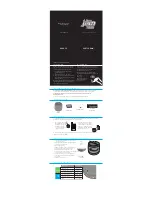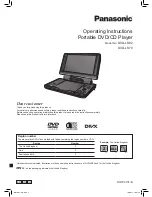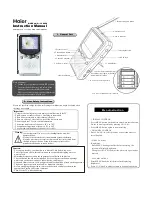
7
English
air station
NOTE:
Each tool is different. Refer to the instructions of
the manufacturer before operating a tool in the seated
position.
USING THE AIR STATION
See Figure 11.
WARNING
Risk of bursting. Do not adjust regulator to result in
output pressure greater than marked maximum pressure
of attachment and/or the item being inflated. Never use
at pressure greater than 9.3 bar. Failure to heed this
could result in possible serious personal injury.
WARNING
Air powered tools may require more air consumption
than this air station is capable of providing. Check the tool
manual to avoid damage to the tool or risk of personal injury.
1. Connecting Hoses to the air station.
2. Control the amount of air flow with the pressure
regulator knob. Turning the knob fully counterclockwise
will completely stop the flow of air, as shown in the
start up section of the quick reference label.
NOTE
: Always use the minimum amount of pressure
necessary for your application.Using a higher pressure
than needed will drain air from the tank more rapidly
and cause the unit to cycle on more frequently.
3. When finished, always drain the tank and unplug the unit.
Never leave the unit plugged in and/or running unattended.
DRAINING THE TANK
See Figure 12 - 13.
1. To help prevent tank corrosion and keep moisture out
of the air used, the air tank of the station should be
drained daily.
2. Turn the air station off, as shown in the shut down
section of the quick reference label.
3. Pull the ring on the safety valve to release until
pressure gauge reads less than 1.4 bar, as shown in
the shut down section of the quick reference label.
4. Release the ring.
5. Rotate drain valves counterclockwise to open, as
shown in the shut down section of the quick reference
label.
6. Tilt tank to drain moisture from tank into a suitable
container.
NOTE:
Condensate is a polluting material and should
be disposed of in compliance with local regulations.
7. If drain valve is clogged, release all air pressure,
remove and clean valve, then reinstall.
WARNING
Unplug the air station and release all air from the tank before
servicing. Failure to depressurize tank before attempting to
remove valve can cause serious personal injury.
8. Rotate drain valve clockwise until tightly closed.
CHECKING THE SAFETY VALVE
See Figure 12.
DANGER
Do not attempt to tamper with the safety valve. Anything
loosened from this device could fly up and hit you.
Failure to heed this could result in death or serious
personal injury.
The safety valve will automatically release air if the air tank
pressure exceeds the preset maximum. The valve should be
checked before each day of use by pulling the ring by hand.
1. Turn the air station on and allow the tank to fill. The
station will shut off when the pressure reaches the
preset maximum.
2. Turn the air station off.
3. Pull the ring on the safety valve to release air for three
to five seconds to allow pressurized air to escape.
Release the ring. The safety release valve must
reset and hold pressure before all compressed air is
exhausted from the tank/pressure vessel.
4. Any continued loss of air after performing the above
steps indicates a problem with the safety valve.
Discontinue use and seek service before continued
use of the air station.
WARNING
If air leaks after the ring has been released or if the
valve is stuck and cannot be actuated by the ring, do
not use the air station until the safety valve has been
replaced. Use of the air station in this condition could
result in serious personal injury.
WARNING
When servicing use only identical replacement parts.
Use of any other parts may create a hazard or cause
product damage.

































